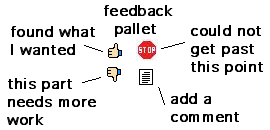I previously blogged about the distinction between open-to-all learning communities and restricted access communities. Beyond limits on participation, most software-based communities have a problem with the free flow of information between communities.
One of the popular tools for helping to prevent online communities from being information silos has been content syndication. The first “feed reader” that I used was Bloglines. Many social networking sites allow participants to aggregate feeds and share those aggregates with other participants. One of these that I recently started experimenting with is Tumblr. There now exists a confusing collection of makeshift solutions to the problem of sharing information and social contacts between online communities. Can there be widely-adopted open standards for social networking?
One attempt to create such standards is the DiSo project. Look at the slogans for the DiSo (dee soh) project (“creation of open, non-proprietary and interoperable building blocks for the decentralized social web”):
I hope that a coherent set of software tools will become available for helping us organize our online social networking. There seems to be a large gap between the needs of online learners and the desire of internet social networking companies to make a profit. Even non-profit organizations that are dedicated to online education struggle to facilitate the social aspects of learning. It will be interesting to see how online social learning networks continue to develop. I suppose things were just as confused when the first bricks-and-mortar schools were created. Most building were used for other things besides facilitating learning. With time, people figured out how to make specialized buildings that were well-suited for learning. At this time, most social networking sites are very much oriented around entertainment and commerce.
If we are going to have efficient social networking tools for learning we need more than “like” buttons. In particular, I want something along the lines of a “I don’t understand X” button. That would be the foundation for for getting help for navigating a learning path through a collection of linked online communities.




